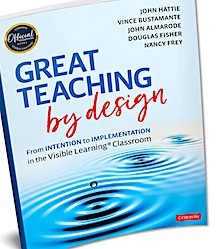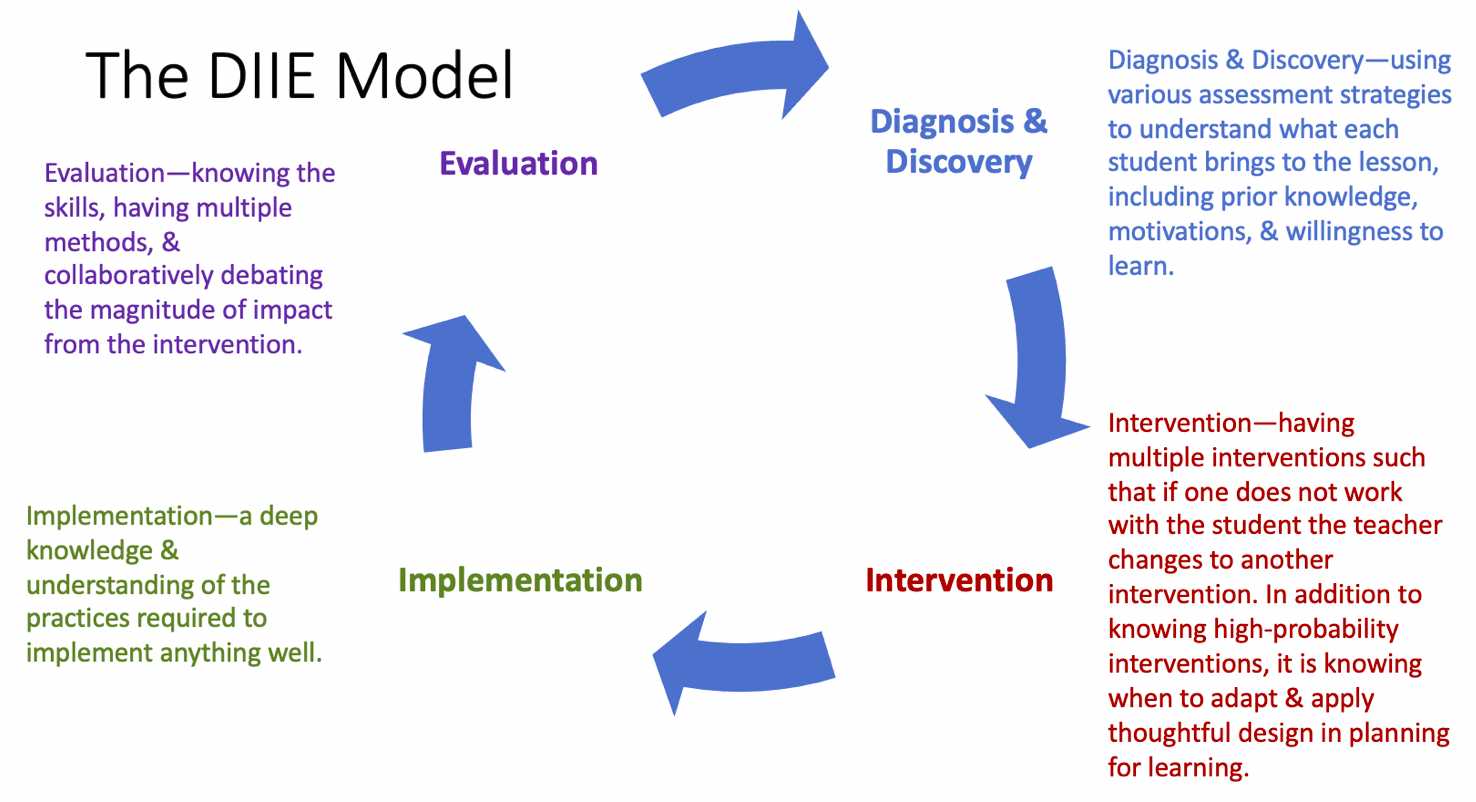 As we think about addressing learning loss – or as I like to refer to it, “unfinished learning” – it’s time to revisit what works best when we really, really need to get teaching right.
As we think about addressing learning loss – or as I like to refer to it, “unfinished learning” – it’s time to revisit what works best when we really, really need to get teaching right.
Recently, several books have been published addressing this very topic. One book I finished reading just this month is Great Teaching by Design: From Intention to Implementation in the Visible Learning Classroom by Hattie, Bustamante, Almarode, Fisher, and Frey.
Let me suggest that before you read any more of this blog post, you take the 45 minutes or so to watch this webinar in which each of the authors—including John Hattie—highlight the key parts of the book.
Of course, because adults (like children) want choice, you may decide to read on. But don’t forget the webinar! It will augment and reinforce this brief review and underscore some very important points.
It’s All About Implementation and Intentionality
Great Teaching By Design begins with this sentence: “This is a book about implementation.” The authors note three keys to implementation:
- Knowing where each learner is on their learning path
- Knowing what works best in teaching and learning
- Evaluating the teacher’s impact on student learning
 Even though we know a lot about effective teaching and learning, we don’t always act on that knowledge. So, as we think about addressing ‘unfinished learning,’ we should ask these questions:
Even though we know a lot about effective teaching and learning, we don’t always act on that knowledge. So, as we think about addressing ‘unfinished learning,’ we should ask these questions:
- Does every teacher in our sphere of influence know about these effective strategies?
- Do they have the skills and will to use them effectively?
- Do they consistently use these strategies?
If your answer “no” to any of these questions, this book will be helpful to you and your colleagues.
The DIIE Model
To help ensure teachers have the knowledge, skills, and will to effectively reach all students, Hattie and his colleagues created a framework they call the DIIE model. Organized around four important components beginning with “Diagnosis and Discovery,” the authors use the model to explicate strategies and steps to ensure successful teaching and learning.
After the Introduction, each of the four steps of the model is explained in a chapter. Recapping Hattie’s meta-analyses, the book provides an explanation of strategies that – if used consistently and correctly – can result in students’ experiencing a year’s worth of growth during that year of instruction.
Hattie is quick to note that teachers must be thoughtful about how and when to use one of these strategies. Simply using any strategy at random can backfire. Matching the right tool to the job is part of great teaching.
Some examples of being selective when using high impact strategies include the following: When introducing a new concept, direct instruction (0.59) might be more appropriate. And, later, when the teacher wants students to both understand and be able to apply what they’ve learned, the use of deliberate practice (0.79) or elaborate interrogation (0.56) might be used.
I’m hoping some of you stopped and wondered about the last strategy mentioned: elaborate interrogation. Here’s how the authors explain it: This questioning technique calls for the reader to generate an explanation for an explicitly stated fact by asking questions such as ‘Why is this true?’; ‘Why does this make sense?’; or even simply ‘Why?’ (p. 60).
Useful and Timely Information
Each of the chapters provides useful tips and strategies. In the chapter on diagnosing and discovery, I particularly liked the suggestion of unwrapping standards by developing learning targets and success criteria AND using the success criteria to surface needed concepts and skills.
As an example, in math, the following concepts, skills, and practices might be surfaced (p. 37):
By simply identifying the three categories, the teacher can begin to see an outline of a successful lesson that is both standards-based and that aims to help students achieve a deep understanding of what they are learning.
Teacher Noticing
The authors highlight a type of formative assessment they call teacher noticing. They define teacher noticing as “the active process of attending to what is happening in a particular learning task or activity and then interpreting what we see” (p. 44). Teacher noticing opens the door to a variety of checks for understanding that don’t always require pen and paper tests. Entrance and exit slips, listening into student conversations, asking brief questions, and other quick but powerful checks, can provide vital information to the teacher about each student’s learning at specific points.
A Good Refresher & Addition to Your Professional Library
As we think about ways to address “unfinished learning,” this book by some of the leading teaching experts in the world is a good reminder of the complexities of effective teaching, and the importance of teachers holding high expectations for themselves and for their students. It also underscored the critical necessity of focusing on both academics and social-and-emotional learning, particularly during times like these!
Resources
► Corwin’s Great Teaching by Design book page.
► The first chapter of the book.
► John Hattie webinar on implementation
► A table from Great Teaching by Design containing several ideas to “hack” a classroom or remote learning space to set up the best environment for student learning.



0 Comments on "Using Great Teaching Strategies to Address “Unfinished Learning”"